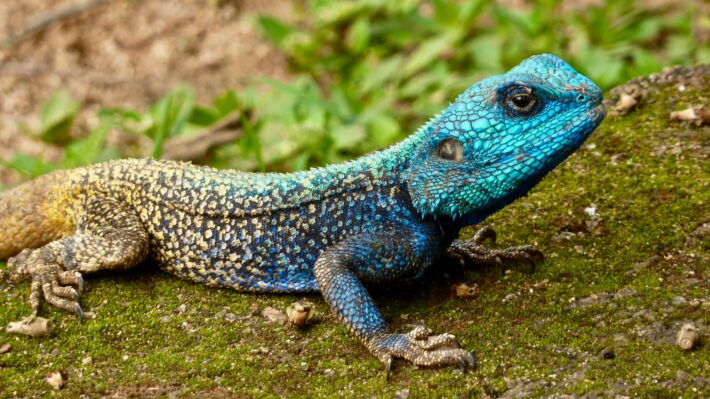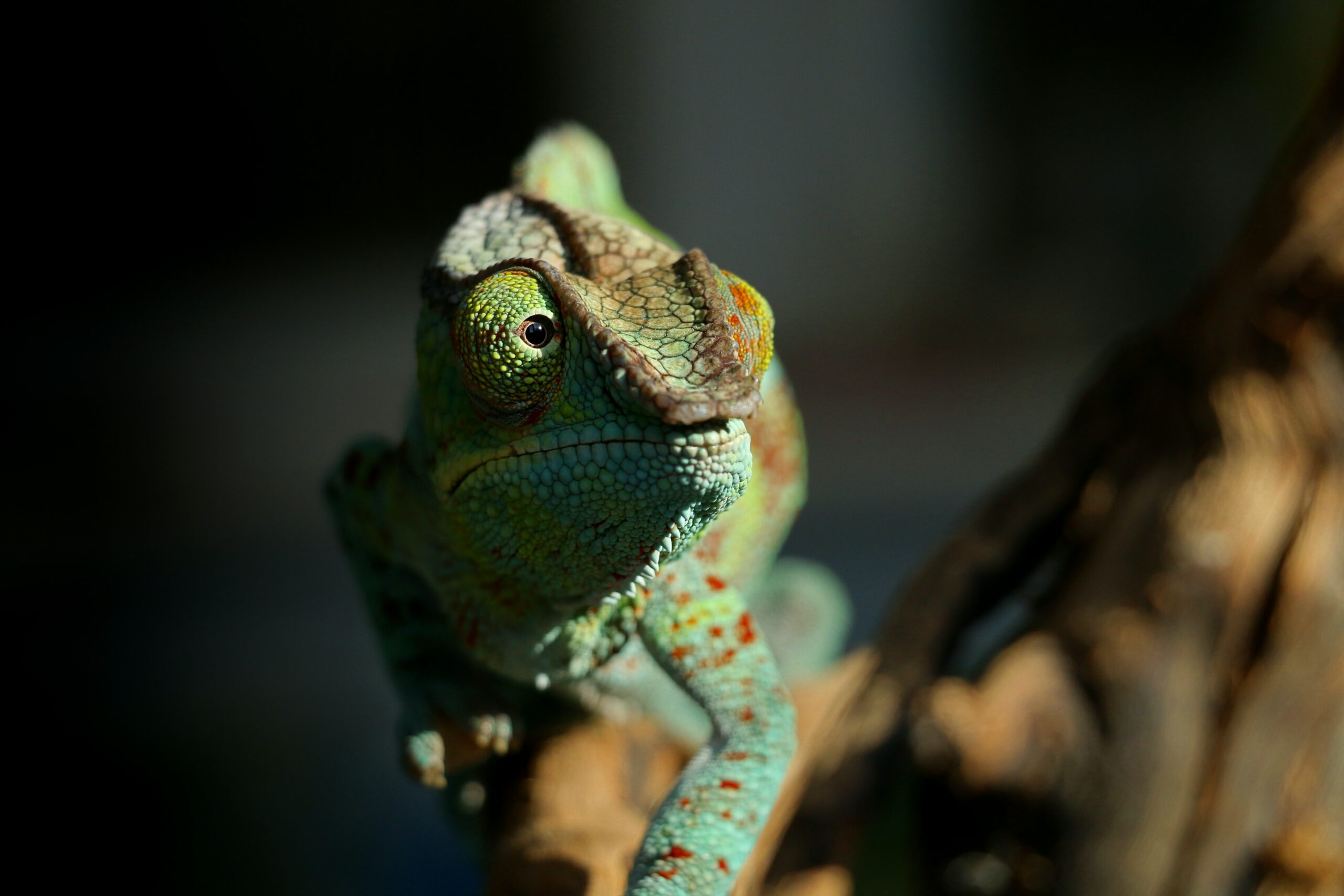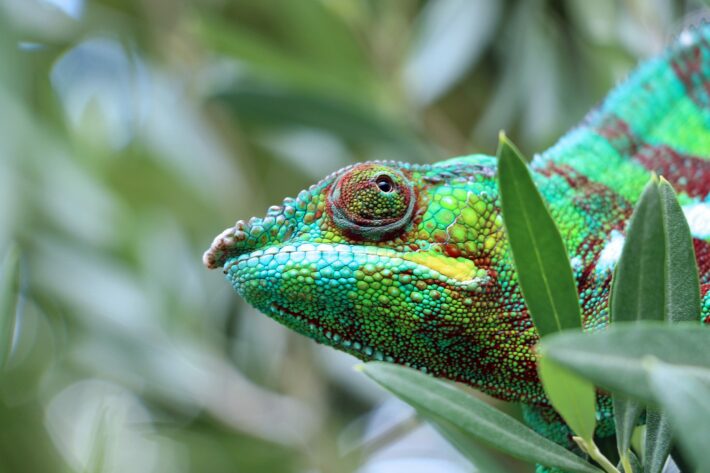Ensuring the well-being of your reptile companion goes beyond providing a comfortable enclosure. Achieving the ideal temperature and humidity levels is crucial for their overall health and happiness. By understanding the specific needs of your reptile species, you can create a habitat that mimics their natural environment.
This comprehensive guide will walk you through the steps to create the perfect conditions for your scaly friend. From selecting the right heating and cooling equipment to implementing effective humidity control methods, you’ll learn the essential techniques to maintain an optimal reptile habitat. Get ready to elevate your reptile care game to new heights!
What are the key factors to consider when creating temperature and humidity levels for my reptile?
When creating optimal temperature and humidity levels for your reptile, several factors come into play. These include the species of your reptile, their natural habitat, and their specific needs.
Additionally, factors such as the size of the enclosure, the heating and cooling equipment used, and the availability of proper ventilation should be considered. By understanding and addressing these factors, you can create a habitat that closely resembles their natural environment, ensuring their well-being and promoting their overall health.
How can I determine the ideal temperature range for my specific reptile species?

Determining the ideal temperature range for your specific reptile species requires research and understanding their natural habitat. Consult reputable sources, such as books or reputable online resources, that provide specific temperature ranges for different reptile species.
Factors such as the reptile’s origin, activity levels, and thermoregulation behaviors should be considered. Monitoring the reptile’s behavior and using a reliable thermometer can also help you gauge if the temperature is suitable and make adjustments accordingly to provide the ideal temperature range for your reptile’s comfort and health.
What are the potential risks of incorrect temperature and humidity levels for reptiles?
Incorrect temperature and humidity levels can have detrimental effects on reptiles. If the temperature is too low, reptiles may become sluggish, have difficulty digesting food, and be prone to respiratory infections.
On the other hand, excessively high temperatures can lead to dehydration, stress, and even heatstroke. In terms of humidity, insufficient humidity can result in skin shedding problems, respiratory issues, and complications during egg incubation.
Excessive humidity can encourage bacterial and fungal growth, leading to infections. Maintaining proper temperature and humidity levels is crucial to prevent these risks and ensure your reptile’s well-being.
Which heating equipment should I use to maintain the optimal temperature for my reptile?
To maintain optimal temperatures for your reptile, various heating equipment options are available. Heat mats or pads placed beneath the enclosure provide gentle bottom heat, while ceramic heat emitters and radiant heat panels emit infrared heat from above.
Heat lamps, such as basking bulbs, create localized heat spots for reptiles to thermoregulate. Additionally, under-tank heat cables or tape can be used to create a consistent heat source. It is important to choose equipment suitable for your reptile’s size, enclosure type, and specific temperature requirements, ensuring a safe and effective heating solution.
Are there any cooling methods I should implement to ensure a suitable temperature for my reptile?
In addition to heating, cooling methods are essential for maintaining suitable temperatures for reptiles, especially in warmer climates or during hot seasons. Providing a shaded area within the enclosure, utilizing fans for air circulation, and incorporating evaporative cooling methods like misting systems or dampened towels can help lower the temperature. Placing frozen items, such as ice packs or ceramic tiles, in the enclosure can also create cooler spots. It’s crucial to monitor the temperature regularly and adjust cooling methods accordingly to prevent overheating and ensure a comfortable environment for your reptile.
What is the recommended humidity range for different types of reptiles?
The recommended humidity range for reptiles varies depending on the species. For example, tropical reptiles generally require higher humidity levels, ranging from 60% to 80%, to replicate their natural habitats. Desert reptiles, on the other hand, thrive in lower humidity levels, usually between 30% and 50%.
Semi-arid species fall somewhere in between, with humidity levels around 40% to 60%. It is crucial to research the specific requirements of your reptile species to provide the appropriate humidity range, as maintaining proper humidity is essential for their overall health and well-being.
How can I measure and monitor the humidity levels in my reptile’s enclosure accurately?
Measuring and monitoring humidity levels accurately is essential to ensure the well-being of your reptile. A hygrometer, specifically a digital one, is a reliable tool for measuring humidity. Place it in the middle of the enclosure at reptile height to get an accurate reading. Consider using multiple hygrometers in larger enclosures to monitor humidity variations across different areas.
Regularly calibrate your hygrometer to maintain accuracy. Additionally, observe your reptile’s behavior and check for signs of improper humidity, such as excessive shedding or respiratory issues. Taking these measures will help you maintain optimal humidity levels for your reptile.
Are there any natural ways to increase or decrease humidity levels in a reptile habitat?
Absolutely! There are natural ways to adjust humidity levels in a reptile habitat. To increase humidity, you can provide a large water dish or install a fogger or misting system to create moisture in the air. Live plants in the enclosure can also contribute to increased humidity through transpiration.
On the other hand, decreasing humidity can be achieved by improving ventilation, using dehumidifiers, or incorporating moisture-absorbing materials like dry substrates or desiccants. Utilizing these natural methods allows you to maintain the optimal humidity levels required for your reptile’s specific needs.
This table provides valuable information on natural methods to increase or decrease humidity levels in a reptile habitat.
| Natural Methods | Benefits | Considerations |
|---|---|---|
| Live Plants | Increased humidity through transpiration | Choose reptile-safe plants and monitor growth |
| Water Features | Evaporation increases humidity levels | Maintain cleanliness to prevent bacterial growth |
| Misting System | Provides controlled and consistent humidity | Adjust settings based on reptile species’ needs |
| Dampened Substrate | Moistened substrate releases humidity into the air | Monitor for excess moisture and mold formation |
| Aquarium Air Stones | Creates small water droplets that increase humidity | Ensure proper ventilation and prevent waterlogging |
What are the consequences of excessive humidity for reptiles, and how can I prevent it?
Excessive humidity can have negative effects on reptiles. It can lead to skin and respiratory infections, bacterial or fungal overgrowth, and increased susceptibility to parasites. To prevent excessive humidity, ensure proper ventilation within the enclosure by using vents or fans. Choose suitable substrate materials that provide adequate drainage and absorb excess moisture.
Additionally, avoid overfilling water dishes or misting excessively. Regularly monitor humidity levels using a hygrometer and adjust accordingly. By maintaining an appropriate humidity range, you can safeguard your reptile’s health and prevent the potential consequences of excessive humidity.
Are there specific humidity requirements for reptile eggs during incubation?

Reptile eggs require specific humidity levels during incubation to ensure successful hatching. Different reptile species have varying requirements. For example, some species, like ball pythons, may need higher humidity levels of around 90% during incubation, while others, such as bearded dragons, may require lower humidity of around 70%.
Research the specific requirements for your reptile species and consider using an incubator or specialized egg incubation medium. Monitoring humidity levels closely and making necessary adjustments is vital to promote healthy embryo development and increase the chances of successful hatchling emergence.
Can I use a hygrometer to regulate humidity levels for my reptile, and if so, how?
A hygrometer is a valuable tool for monitoring humidity levels in your reptile’s enclosure, but it is not typically used to regulate humidity directly. Instead, hygrometers provide you with accurate readings so you can make informed adjustments to maintain the desired humidity range.
By using the hygrometer’s measurements, you can employ various methods to increase or decrease humidity, such as adjusting water dish sizes, incorporating misting systems, or improving ventilation. Regularly monitoring the hygrometer readings allows you to fine-tune humidity levels and create a comfortable environment for your reptile.
Should I provide a separate basking area to create a temperature gradient in the enclosure?
Yes, providing a separate basking area is highly beneficial for creating a temperature gradient in your reptile’s enclosure. Reptiles often require a specific range of temperatures to regulate their body heat effectively.
By offering a dedicated basking spot with a higher temperature at one end of the enclosure, and a cooler area at the opposite end, you allow your reptile to thermoregulate by moving between the two zones as needed. This temperature gradient mimics their natural habitat and provides them with the opportunity to self-regulate their body temperature, promoting overall health and well-being.
How can I ensure that my reptile’s habitat offers the appropriate temperature and humidity during both day and night?
Maintaining appropriate temperature and humidity levels in your reptile’s habitat throughout the day and night is crucial to replicate their natural environment. To ensure consistency, use appropriate heating equipment, such as thermostats or timers, to regulate temperature during both day and night cycles.
Consider using ceramic heat emitters or low-wattage bulbs to provide gentle heat during the night while minimizing disruption to the reptile’s natural sleep patterns. Monitoring humidity levels consistently and adjusting as needed will help maintain the required humidity throughout the 24-hour cycle. Creating a stable and comfortable environment supports your reptile’s overall well-being.
Are there any specific considerations for maintaining temperature and humidity levels in a desert reptile habitat?
Maintaining temperature and humidity levels in a desert reptile habitat requires specific considerations. Desert reptiles typically require lower humidity levels and higher temperatures. Provide a basking area with a high-quality heat source to achieve the required temperature range.
Utilize arid-friendly substrates, such as sand or rocks, to allow for adequate heat retention and minimize humidity retention. Additionally, ensure proper ventilation to prevent excessive moisture buildup. Regularly monitor temperature and humidity levels to ensure they remain within the appropriate range for desert reptiles.
By addressing these considerations, you can create a habitat that mirrors their natural desert environment.
Are there any reptile species that have unique temperature and humidity requirements, and how do I cater to them?

Yes, certain reptile species have unique temperature and humidity requirements. For example, rainforest-dwelling reptiles, such as chameleons or tree frogs, require higher humidity levels and lower temperatures. To cater to them, consider implementing misting systems or automatic sprayers to maintain the required humidity. Install fans or misters to create a cooling effect and lower temperatures.
Conversely, species like desert-dwelling reptiles, such as leopard geckos or bearded dragons, have lower humidity requirements and need higher temperatures. Research the specific needs of your reptile species and adjust the habitat accordingly to provide the ideal temperature and humidity conditions for their optimal health and well-being.
To sum up
Creating the ideal temperature and humidity levels for your reptile is crucial for their well-being and overall health. By considering the specific needs of your reptile species, researching their natural habitat, and implementing appropriate heating and cooling equipment, you can provide a habitat that closely mimics their natural environment.
Maintaining optimal temperature and humidity levels prevents potential risks, such as respiratory infections or dehydration, and promotes proper digestion, shedding, and overall vitality.
By following the guidelines and utilizing natural methods to adjust humidity levels, such as live plants, water features, misting systems, dampened substrate, or aquarium air stones, you can ensure a comfortable and thriving habitat for your reptile companion. Remember to regularly monitor and fine-tune these levels to guarantee a balanced and ideal environment for your reptile’s optimal health and happiness.




